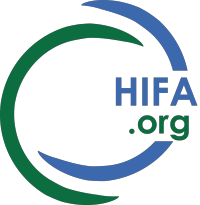[*Note from NPW, moderator: The message below is a postscript to Esha's previous message: https://www.hifa.org/dgroups-rss/support-systems-56-q2-have-you-ever-par... ]
Even though the comments may not contain specific responses to Q 2 and 3, you will note that they do provide a context for this. I believe the project provides a great opportunity for all - not only to share "success stories" but also to facilitate some "disruptive" ideas particularly based on lived experience of witnessing inequities ! And that is why I had mentioned in my previous response , the contrasts between
"reform" approaches and transformation .We could go on and on speaking to this theme and perhaps Neil, you could organize a virtual discussion forum - once all the Project questions are answered?
As an additional point, on reviewing the references mentioned by Unni, at the end of his long (very helpful) note, I wanted to share the following points. thoughts for further consideration )
Abelson, J., & Gauvin, F. P. (2004). Engaging citizens - A great axiom as long as all citizens are culturally the same! Otherwise the One route rule faces the proverbial “One size does not fit all” handicap)
Oakley, Peter, and World Health Organization.(1989) Community involvement in health development: once again, the question may be which community? who plans the involvement?
World Health Organization. "Voice, agency, empowerment: Handbook on social participation for universal health coverage." (2021).
(I am delighted to see the reference, I had requested Neil to attend its launch as a HIFA rep. Yet, for our purposes It is important to remember that for the marginalized population, in the absence of both voice and agency in policies or decision making about health, the em-powerment also becomes a symbolic gesture)
McCoy, David C., Jennifer A. Hall, and Melanie Ridge. "A systematic review of the literature for evidence on health facility committees in low-and middle-income countries." Health policy and planning 27.6 (2012): 449-466. (It is important to note that LMICs may have diverse intersectoral and cultural elements that also need to be addressed)
Arnstein S. 1969. A ladder of citizen participation. Journal of the American Planning Association 35: 216�22. (the ladder model rungs make assumptions that may not apply to marginalised population)
Let us continue the important conversation !
Best,
Esha RC
HIFA profile: Esha Ray Chaudhuri is an Equity Analyst, in Canada. Professional interests: Equity Issues in Health and Health Care with particular focus on interface of Local and Global contexts. She is a member of two HIFA working groups: HIFA SUPPORT-SYSTEMS - How can decision-making processes for health systems strengthening and universal health coverage be made more inclusive, responsive and accountable? and the WHO-HIFA Catalyst Group on Learning for quality health services. https://www.hifa.org/support/members/esha-ray
https://www.hifa.org/projects/new-support-systems-how-can-decision-makin...
https://www.hifa.org/projects/learning-quality-health-services Email address: ed.consult3 AT gmail.com

